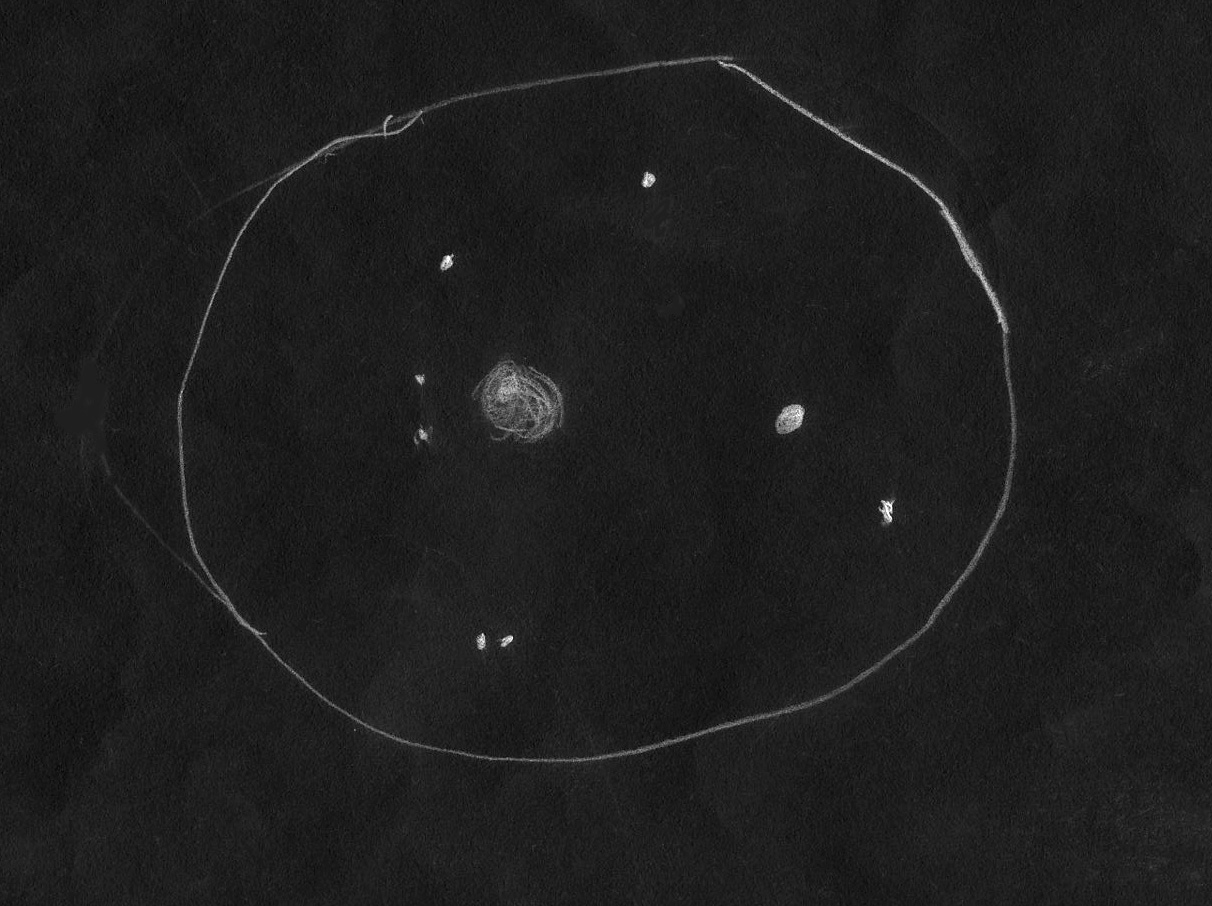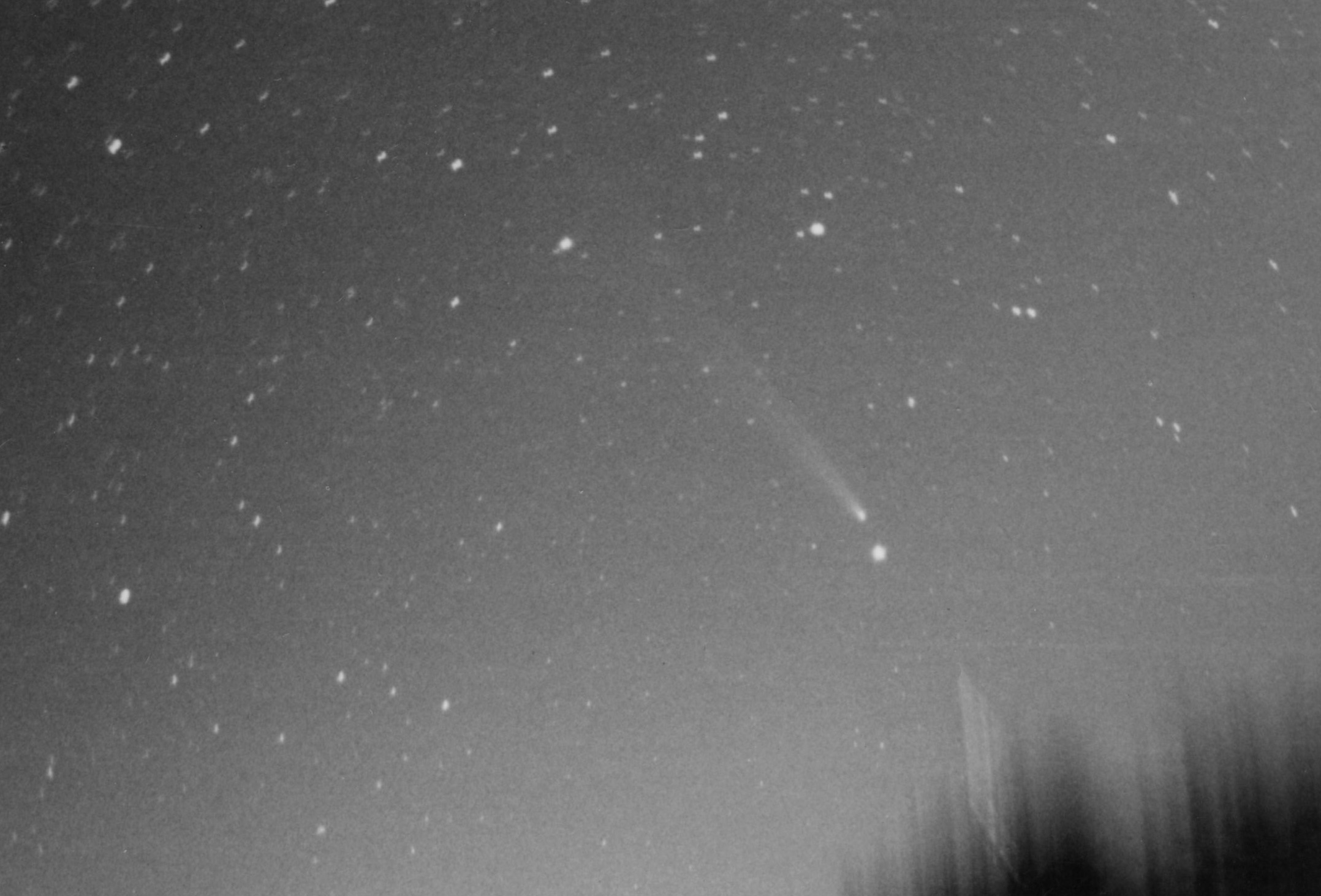
Perihelion: 1969 December 21.27, q = 0.473 AU
Everyone fondly remembers their “first.” When it comes to comets, my “first” came exactly 50 years ago on Monday evening, February 2, 1970, when I was 11 years old and in the 6th Grade, and involved a 5th-magnitude fuzzball located close to the 2nd-magnitude star Hamal in the constellation Aries. My best friend, Mark Bakke – who was every bit as much into astronomy as I was – came over and brought his 60-mm refractor, and by using information within the magazine Sky & Telescope and a pair of 7×35 binoculars I easily located the comet. I could faintly see it with my unaided eye, and through the 11-cm reflector I had recently acquired it appeared as a bright, diffuse coma with a distinct central condensation. In addition to Mark, I successfully convinced the various members of my family, which included my father, my mother, my paternal grandmother, and my older brother Barry (then 16 years old) to come out and look at it, although to be honest I think I they were a bit underwhelmed. Mark and I, on the other hand, were about as excited as one can be, and we shared our observation with our teacher and classmates at school the following day.
The comet in question had been discovered on October 10, 1969, by a Japanese amateur astronomer, Akihiko Tago. He waited two nights to confirm it, and when he did so it was independently picked up by two more (quite young) Japanese amateur astronomers, Yasuo Sato (age 19) and Kozo Kosaka (age 17). At the time of its discovery Comet Tago-Sato-Kosaka was about 10th magnitude and visible in the western sky after dusk; it traveled southward and brightened, becoming inaccessible from the northern hemisphere in early November and disappearing into twilight from the southern hemisphere in early December, by which time it was about 6th magnitude.
The comet became observable from the southern hemisphere again during the latter part of December, and was reported as being as bright as magnitude 2 ½ to 3, and with a distinct tail. In early January 1970 it started heading back north, and for a while its brightness held fairly steady as it was still approaching Earth (closest approach being 0.38 AU on January 20). It was still around 4th magnitude when it became accessible again from the northern hemisphere in mid-January.

Comet Tago-Sato-Kosaka became the first comet ever to be observed from space, when beginning on January 14 and continuing for the next two weeks a team of astronomers led by Arthur Code at the University of Wisconsin observed it with the Orbiting Astronomical Observatory 2 (OAO-2) spacecraft that had been launched in late 1968. OAO-2’s ultraviolet detectors recorded a large cloud of hydrogen almost three degrees across – 1 ¼ times the diameter of the sun in physical terms. The existence of such a cloud was not unexpected, in fact it had been predicted by the German astronomer Ludwig Biermann in 1964. These “Lyman-alpha clouds” have now been detected surrounding many other comets, and indeed they are now known to accompany most comets visiting the inner solar system. These and other spacecraft observations of comets are discussed in this week’s “Special Topics” presentation.
As I indicated, the comet had faded to 5th magnitude by early February. I followed it every night for the next week, and on the evening of February 6 it seemed surprisingly bright, and was easily detectable with the unaided eye. I would later learn that the comet had undergone a brief outburst at that time, and there is some evidence that it might have undergone a small fragmenting event then. On the next two nights the comet had faded back to its normal brightness, and after being clouded out on the evening of the 9th I didn’t look for it again. According to other observers, it faded steadily, to around 11th magnitude in early April, and the final photographs were obtained in early May.

50 years later, it occurs to me that, of the five people who shared that initial comet observation with me, only one is still alive. My grandmother passed away in 1973, my father in 2002, and my mother in 2013; Mark, meanwhile, was tragically killed in a gunshot accident in 1984 at the age of 27. My brother Barry is still going strong at age 66 and I hope he continues doing so.
Orbital calculations indicate that Comet Tago-Sato-Kosaka is traveling in a very elongated orbit that will bring it back in about 110,000 years. Perhaps any beginning comet observers from whoever, or whatever, will be living on Earth at that time will once again be able to view it.
More from Week 6:
This Week in History Special Topic Bonus Content Free PDF Download Glossary
Ice and Stone 2020 Home Page


